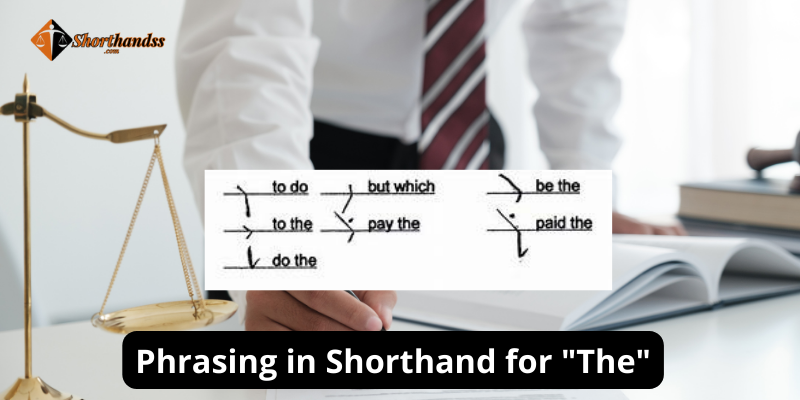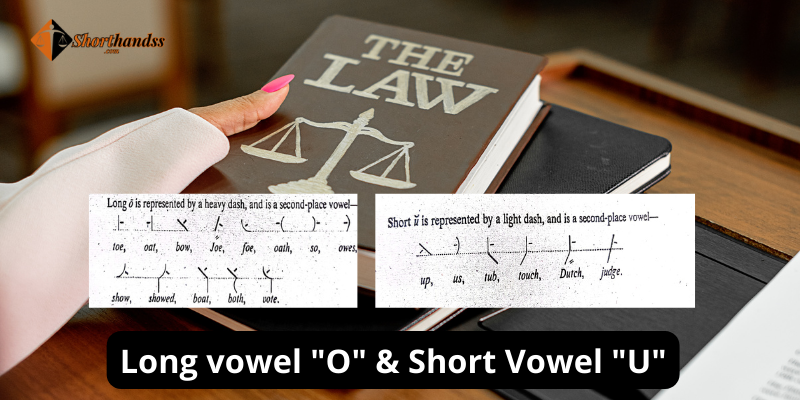Phrasing in Shorthand Language is the most important part of any Shorthand. Phrasing provides us with lots of writing speed and makes it easy for students to pick 80 or 100 speed in shorthand. In simple words, As an aid to rapid writing, shorthand words may often be joined. This is called phrasing. Outlines should be phrased only when they join easily and naturally, as shown in the examples throughout this textbook. In the phrasing we will place the first stroke of the word in the place we have, we will place that stroke according to the rules of that place and join the rest of the strokes with it in their proper direction. This way we’ll complete our phrasing by keeping all of our strokes in place.
Advantages of Phrasing in Shorthand
The biggest advantage we get from phrasing in shorthand is that we can write more words easily and in less time instead of writing sub-words separately which takes more time and is difficult. On the contrary, in phrasing, we can write more words in less time. With phrasing, we can easily write more words in less space while without phrasing we write the same word in more time and more space. There are many words in the shorthand which we do not write in phrasing, but we write them separately and we have most of the words in phrasing.
Phrasing in Shorthand for “The”
In simple shorthand writing dot (.) on the line is used for the short forms of (the). But in Phrasing, a small tick at the end of the word represents (the). The direction of the tick is upward or downward, Whichever forms the sharper angle but, whether written upward or downward, its angle to the line of writing is always the same. As we explain above dot (.) on the use for the. but the question is what will be used for a full stop. So in shorthand writing,
we use a small cross at the end of the sentence for a full stop. In shorthand, we use a cross for a full stop, while when we convert the same sentence into English, we will replace the cross with a dot for a full stop. This cross we use for full-stop in shorthand is because we use the dot for “the” in shorthand. So to avoid this confusion we use the cross for the full stop. For a better experience, students write exercise no 1 a minimum of 10 ten times.

Next Consonants in Shorthand
There are 24 consonants in the Shorthand language. We are discussing six consonants in the previous article. Here we discuss the second group of consonants. The next sixteen consonants are all written downward, forward, and up. The next four pair of consonants are written downward. Some strokes are written light and some are written heavy. They are written with light strokes except “g” and “ng”.
Before these consonants, we discuss vertical strokes. The rule of a vertical stroke is that if vowels come before the stroke it’s placed left of the stroke and if vowels come after the consonants it places right of the stroke. These rules explain to us the writing principle of vertical stoker. But in horizontal strokes, laws are changed. When a vowel comes before the horizontal strokes it is written above the stroke and when a vowel comes after a horizontal stroke it is written below the stroke. We must follow the rules of shorthand for the placement of vowels so that we can write the correct words.

Long vowel “O” & Short Vowel “U”
As we discuss previous article there are four vowels in second place. The rule of second place is that the first up/down stroke rest on the line and vowels are placed in the middle of the strokes. The long vowel “O” is the third vowel of second place. It is represented by a heavy dash (–). The short vowel “U” is the last vowel of the second place and it is represented by a light dash (-).
We have a total of 12 vowels, some vowels with a light sound and some vowels with a dark sound, of which we have discussed two, and right now we are discussing the Long Vowel O and Short vowel U. The vowel with which we add long has a dark sound and its sound is heard longer and more properly, and the vowel with which we add short has a short time sound and is heard with a lighter sound. For example.

Jobs In Pakistan:- Project Coordinator Job In Islamabad
Examples of Phrasing in Shorthand Language
Phrasing is a very easy way to increase the writing speed. Candidates feel very comfortable writing after learning the phrasing. In a Phrase, the stroke of “L” is used to represent the word “will”. In simple the stroke “L” is used as a short form of “will” in phrasing. If “L” is only stroke with any other then it represents “Lord”.
Phrasing and the next group of consonants provide us with lots of learning help and make it easy for us because shorthand is a very easy way to get high-skill jobs. For a better experience, students must write every exercise minimum of ten times.

